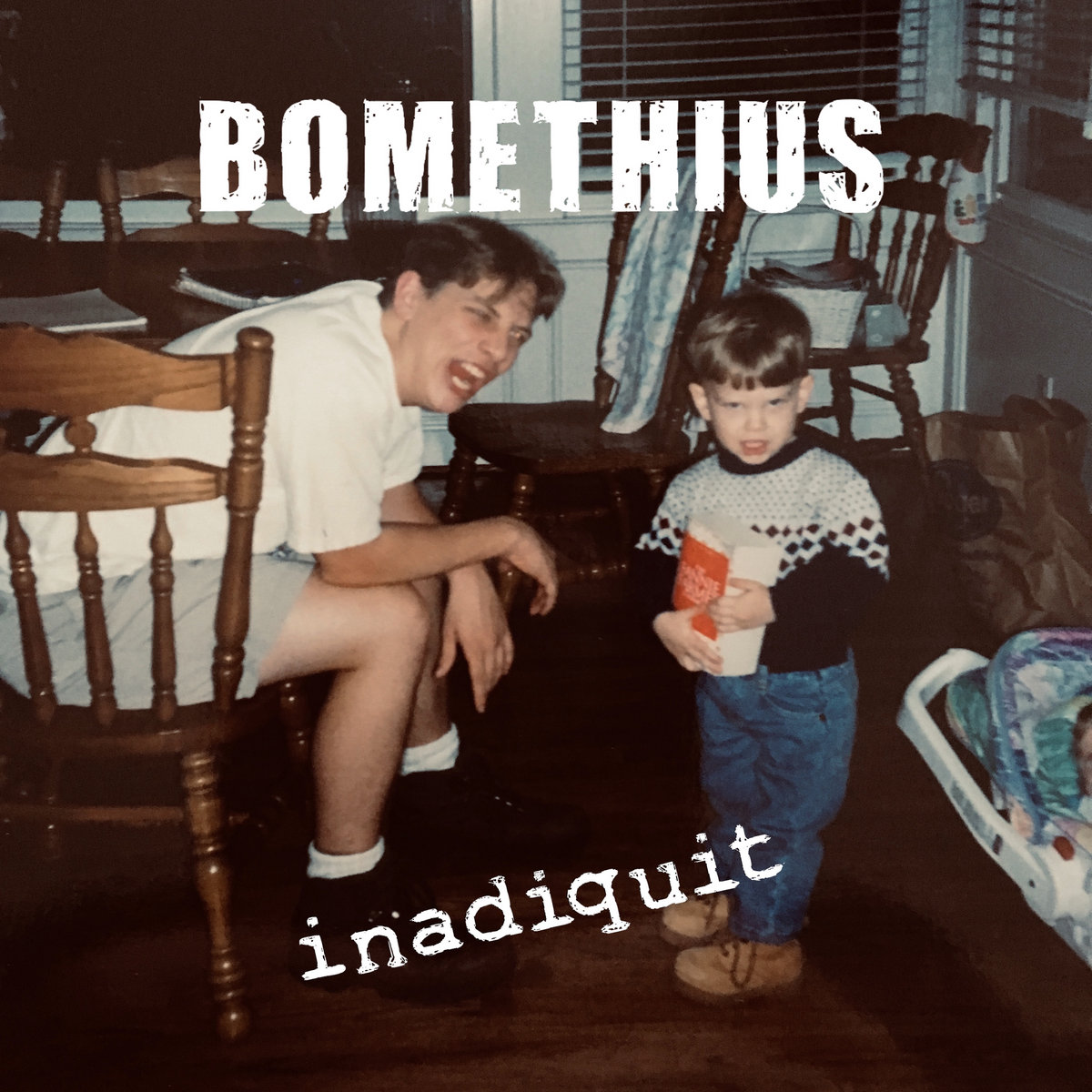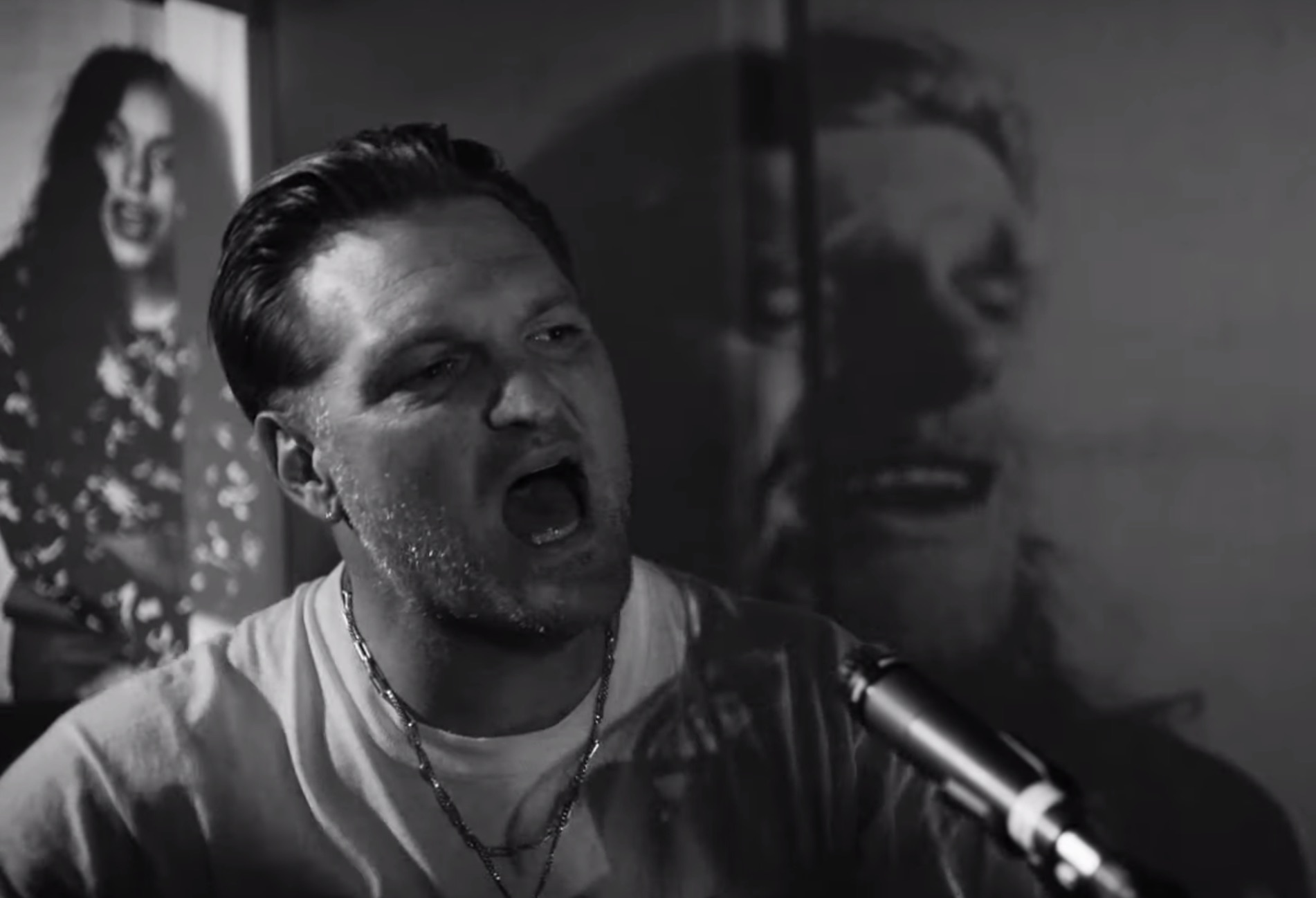Franco-American artist Uèle Lamore discusses her debut album ‘Loom,’ the bridge between electronic and classical music, and much more in our in-depth interview!
Stream: ‘Loom’ – Uèle Lamore
I forgot 90% of what I learned in college; honestly, I never use it. It’s good to study because it opens your ears and it makes you think in different ways. When you’re actually writing music that people are going to listen, to just do whatever you want.
There’s something growing within Uèle Lamore’s music.
Like a solitary gardener, she plants a seed within the heart with cupped earthen noisemakers on “Intro.” Like the drizzling rain, “The Dark” wets the appetite of fertile ground with percussive strings. Like a budding stalk, “The Creation” pushes from this dark soil with the curiosity of chiming orchestra of bells and cellos. Like a vine, “The First Tree” creeps along the tangling words off Gracy Hopkins’ enigmatic lips.

When her album finally reaches the warm embrace of daylight, the swell of cellos on “Breathe,” confirms Lamore’s ascension to a canopy outside the reach of classical, electronica and alternative umbrellas.
These branches which harbor and cover so much of the scene-specific music in the understory of the industry are hard to penetrate when commenting from above; like a nature documentarian, the panoramic view of Lamore’s music gives us a sense of scale, but it doesn’t feed much insight into the inner workings of a prodigal ecosystem lush with new music.
And Lamore’s music is nothing if not lush. She’s a fan of Brian Eno and The Cocteau Twins, and it shows the in the ambient glory of her music. “Breathe” might rest its laurels upon a snapping percussion, cutting synthesizers and a majestic spread of cellos but Lamore bookends it with field recordings of youth at a Parisian skate park.
“I ended up walking in front of one of the biggest skate spots in Paris and I recorded some of the skaters. I was like, ‘Man, this track is actually about skateboarding,’” she tells the story, painting the growth of “The Creation” from simple Moog-like synthwork into a tale of youth spent half on skateboards, half posing with them.
Her skateboarding youth sits in stark contrast with her pursuit of music, a choice she made upon turning 17 on account of her graduation from lycée. It’s a choice which took her through the conservatory of Berklee, multiple iterations of jazz ‘tets and into a world of film compositions.
Her early work on the forest floor as bandleader of Uèle Lamore and Friends frequently blurred the lines between jazz, classical and rock. The movements of “Fluctuat Nec Mergitur” coalesce and disappear just as easily. The cover of “Riders on the Storm” takes Ray Manzarek and Robbie Krieger’s inclinations and dials them to a philharmonic eleven.
But it’s Lamore’s work on Loom, her recently released debut album (out February 2022 via XXIM Records / Sony Music), which supports my working theory that the potential of a deejay is more than a one-man band.
In the computer lies the orchestra and the right Moog can turn a disc jockey into a circuit board conductor. Of course, Lamore goes about it in a completely different way. She just enlists the aid of the London Contemporary Orchestra. The best laid theories, they say.

A CONVERSATION WITH UÈLE LAMORE

What have you been listening to recently? Or, even more tantalizingly: do you listen to music when you're composing?
Uèle Lamore: Recently, I’ve been listening to stuff that times kind of like puts me in a very chill out mood. A lot of Brian Eno. He did a lot of cool collaborations with this guitar player called Harold Budd, who used to be part of the Cocteau Twins, and they did a lot of super ambient stuff. But it’s really melodic in some kind of way.
I usually listen to music when I’m stuck in a place, I don’t really know what I’m going to do with a track or something. I take a break from what I’m doing and just listen to stuff that I like or tracks that I find interesting that can maybe give ideas of how to get unstuck in my own tracks. It’s really important when you’re writing music to listen to other music and find inspiration. Not to be like stuck in your own bubble.
Your music is described as “post genre” but how much of this description is hype and how much of it is truth?
Uèle Lamore: I think that like “post-genre” is kind of like a term that’s very convenient because it doesn’t describe anything. This journalist used it and he was like, “are you okay with it?” I’m like, “Dude, I don’t know.” When I started, I hadn’t heard that term before. And then when I started listening to the music that was characterized as being “post-genre,” I didn’t think that it fit what I do. I just think that my music is more indie something, you know?
How do you feel like the development of globalized music has sort of contributed to post-genre music?
Uèle Lamore: One of the things that contributed to it is that we have access to so much music and it’s so easy to get. For me, YouTube is also a great resource to listen to really obscure stuff that was recorded in the 70s. There’s like, 300 views on it. You can listen to Indonesian gamelan and some music from Burkina Faso or Venezuela.
Apart from having access to so much music, you can also—with like, your computer, and plugins—have access to rare instruments through libraries and see how it actually sounds in the context of your own music. And then if you want to record with an actual instrument, there’s a way to get around and find somebody who knows how to play it. Things have just become easier for people that are musically curious.
Which area of world music do you find most curious?
Uèle Lamore: It’s called Afrobeat, but I don’t know if that’s the best term. They came from like Burkina Faso, Mali, Senegal, also Angola. There was interesting stuff being done, especially with the rhythms and the guitar. Afrobeat has this way of treating rhythm that is super covert. There’s a tonal center but what happens in between is open to interpretation.
I would say Africa and Asia have made the stuff that I’ve most listened to. I don’t really call it “world music,” but I’m sure bossa nova is listed in that category. There’s a guitar player called Baden Powell, who kind of invented the genre with this poet-singer called Vinícius de Moraes. They did this landmark record this called Os Afro Sambas and it’s the most beautiful thing ever.
Being the bridge between French and American musical spheres, what do you think the key differences and similarities are between each sphere?
Uèle Lamore: America is very attached to the styles that come from its country that have been hugely influential all over the world. There’s the “American Sound” because America has been such a powerhouse of music. But in France, it’s a tiny country that’s surrounded by other tiny countries.
France doesn’t really have a real musical heritage. It’s built up from what was happening in England and what was happening in America and what was happening in Germany. And then it became a European sound from Western Europe. People say there’s the French touch sound. But we didn’t invent jazz, we didn’t invent blues, we didn’t invent funk music. We just listened to what was happening in England, America, and Germany and did our own thing with that. That’s the main difference.
It’s really important when you’re writing music to listen to other music and find inspiration.

•• •• •• ••
Before going further, let’s talk about the obvious: Synthesizers and strings are a cheat code.
If ever there was one to imbue a sense of respectability upon electronica, the use of classical and neo-classical string elements has been the singular thread sewn between such varied dance genres as disco and electronica. In the avant-garde, the electroacoustic work of John Cage, Phillip Glass and Morton Feldman have influenced modern composers such as Nils Frahm, Nicolas Jaar, Max Richter and Sam Shepherd.
The combination can induce orchestral criterion or cloistered chamber aesthetics in their ultra-contemporary music. Compare the solitude in Jaar’s “Too Many Kids Finding Rain In The Dust” to the literal orchestra in Shepherd’s “Movement 6.” The music, while electronic and acoustic and worthy of all sorts of new-fangled fusions in search of description, belies the simple fact that many musicians are fast approaching a realm beyond classic genre descriptions.
Lamore employs the London Contemporary Orchestra to great effect for “Currents” and “Gene Pool.” The former backs up the main thrust of a moody, winding melody; divert your attention and you might miss it. The latter hears them more pronounced, also in a back up role but even more dramatic.
The synthesizers might squall and laser about the tracks, but it’s that company of players that help her endow the music with a weight heavier than electroacoustic implies.
When I asked Lamore how much hype was involved in the press release’s quicknote analysis of her music as post-genre, she could only smile and laugh, “I think that “post-genre” is a term that’s very convenient because it doesn’t describe anything.”
“This journalist used it and he was like, ‘are you okay with it?’ I’m like, ‘Dude, I don’t know.’”
After reflection, however, she admits she doesn’t find the term to be of much use in describing her music. Mainly because after reviewing the post-genre works of others, she found them completely unlike her own. Then again, why should anyone expect two post-genre artists to sound similar?
For Lamore, trip-hop auteurs Massive Attack represent the best example of a truly post-genre band, albeit one that has spawned plenty of Francophone imitators, emulators and knock-offs in a rush of muzak that never quite meets the same standard. Lamore’s own rotational listening cites them among Phoenix, Eno, Kikagakyu Moyo, afrobeat and bossa nova.
The Franco-American génie frequently uses different artists to find out what she wants to extract from her own tracks. Summoning the orchestra, the ambient synthesizers, electric guitars and a host of vocalists at a whim only represents the songwriting alchemy bubbling within her mind at all times.
It’s a cultivated taste that puts her in intellectual company with a veritable MENSA of musical capacity.
Atwood Magazine: What synchronicities do you see between electronic and classical music? You fuse the two very well on Loom.
Uèle Lamore: There’s a lot of similarities in the way that the tracks are built. Electronic music usually have—well, it’s usually a beats that’s constant and that has variations. Then on top of that you have a theme or melody and then there’s development for five minutes. The classical piece kind of works the same way; you’re going to have some sort of ostinato that’s going to hold the whole track together, you’re going to have some breaks and some low points and some high points and a melody or light motif. It’s the same architecture more or less.
Is it fair to say Loom is a collection of movements?
Uèle Lamore: That was something that I really wanted to do because — especially in France — the music industry is having this very strange moment where everybody is stuck in the ’80s.
How do you compose music? When is it hard music theory?
Uèle Lamore: I don’t think about it. Usually when I write a track, it ends up just revolving around like one chord. There’s some songs that just have one chord in it. I studied so much music theory that I became super allergic to it. I forgot 90% of what I learned in college, honestly, I never use it. It’s good to study because it opens your ears and it makes you think in different ways. When you’re actually writing music that people are going to listen to just do whatever you want.
Are strings and synths the strongest bridge between electronic and classical music?
Uèle Lamore: There’s been strings added in electronic music since forever, either sampled or recorded and I don’t know why it works so well. Maybe one of the reasons is that with string orchestras, there’s a lot of things happening. There’s a lot of harmonies and simple sympathetic sounds that are being created. And a synth basically works the same way, it’s like a circuit that creates a sound that then has different oscillators on top of it. It’s the same system, just way smaller. Maybe because of that, they blend super well just like a guitar and a bass works super well together.
Going back to the music, “First Tree” features hip-hop artist Gracy Hopkins using spoken word over an electro-classical score. On the music video, he's walking through a forest delivering spoken word. How did you meet him? And how did his voice become the missing ingredient of that song?
Uèle Lamore: He’s the kind of guy that you always see at sessions and rehearsal studios. He’s always there hanging out and then he takes the mic and does (intense vocalization) and everybody goes “Whoa,” and then he leaves. You don’t see him for six months.
I always had his voice in mind because he speaks really well. The crazy thing is that he’s not even American, he’s French. He taught himself how to rap with an American accent which blew my mind. And “First Tree” is actually the first track of Loom that I did and when I did it, I had his voice in mind because I always wanted to work with him. I thought that if I actually had a track for Loom that is going to come out he’s going to say yes because he’s free. And we sent it to him, he’s going to say yes, he said yes and I was like yes!
Album's on, boys!
Uèle Lamore: Yeah, exactly. It was a good track for him and I think that he was pretty happy to do it. The hip hop scene in France, they’re really into trap music so he does a lot of that. He was like, “man, it’s cool to do something that’s a little bit different.”
Are you writing with specific vocalists in mind?
Uèle Lamore: Absolutely. And it’s a very dangerous gamble. Because if the person says no, you’re going to be in the shit, you know? (laughs)
It’s always usually somebody that I know, personally—or at least I know a little bit personally—and I know that we’re going to have a good time doing the track together.
Do you feel like the future of music is prescribed to this post-genre music? Or do you think people are just building the new genres of tomorrow and we have no idea what the fuck to call them.
Uèle Lamore: I think that’s more of the case. There’s so much new music that’s happening right now and nobody really knows how to call it because it sounds like so many things that happened before, but it’s not quite exactly that. So I think there will be a name for it, but maybe in 10 years, or something. I just really hope that we’ll get out of the ’80s.
With string orchestras, there’s a lot of things happening. There’s a lot of harmonies and simple sympathetic sounds that are being created. And a synth basically works the same way.

•• •• •• ••
In an interview with CREEM magazine Brian Eno said, “The way I work is to create music that creates a feeling within you.”
Simon Reynolds, quoting this exact line, commented that Eno cultivated a “literally objective approach” that turns compositions into “sonic sculptures.”
Without lyricism, compositions shift from the external world into the internal world. The story-telling device turns away from words, opaque or not, and into the central tenets of music: melody, rhythm and harmony. The interplay of melodic phrases, displacements from key to key and instruments written like characters all come into focus.
Instrumental music is thus like a game of chess; the movement of the pieces tell the story, not the slapdash imagery from a dungeon master lyricist. For all intents and purposes, Lamore wanted to craft something that would “catch the attention of the listener and bring that person somewhere else, create a world or a universe of sounds that’s different and really immersive.”
“It’s like warm water and it just takes you and you close your eyes and you see what’s going to happen,” she added.
“Get reborn in the rains of Africa,” I riposted. Lamore just laughed in agreement.
So don’t expect to dance to this record, but don’t expect to remain unmoved. It’s best suited to listening like a symphony; consider each song a movement in a greater textural experience to the sloe, fertile soil of electroacoustic operettas.
Even when features Gracy Hopkins, Cherise and Silly Boy Blue appear on the latter half of the tracklist, their voices shoot off the main stalk to produce flowering spoken word and R&B berceuses to the greater work of floral drama that makes up Loom. Together with the acoustic and synthetic instruments, they render digital interpretation of some other form.
Besides the aforementioned Eno, Cage, Jaar et al, Lamore’s company of electronically formulated soundscapes includes Loma, Bon Iver, Radiohead, Kate Bush. Artists who regularly challenge their listeners. Anyone listening to Loom will either enjoy challenging themselves with their selection, or they will turn it off immediately.
A shame for those who would, because the record is immaculately crafted and produced, all intertwining unto itself with a unique but stylistic sustain on first listen.
From the twinkling bells of “Pollen” to the baroque flute of “Creation, the inspiring concert strings wielded with ecstasy (“Breathe”) or drama (“Gene Pool”) and skittering, splashing noisemakers running rampant across the entire long-player, the instrumentation on this record knows no boundaries.
Lamore proves her self as as a composer, one completely uninterested in defining her sound Leave that to the journalists and commentators who buzz about on internet magazines and outlets trying to figure out how new records and albums and extended players fit into their own understanding of this thing we call music.
She is currently working on a new original soundtrack as well. Should we find her scoring many independent films in the future, let no one be surprised. She can already score any requiem for a club floor (“Dominance”).
And as long as Lamore tends to her artistic growth by remaining out-of-the-box, she will not be contained to one garden or the other.
— —
:: stream/purchase Uèle Lamore here ::
— — — —

Connect to Uèle Lamore on
Facebook, Instagram
Discover new music on Atwood Magazine
? © Daphné Giquel
:: Stream Uèle Lamore ::








